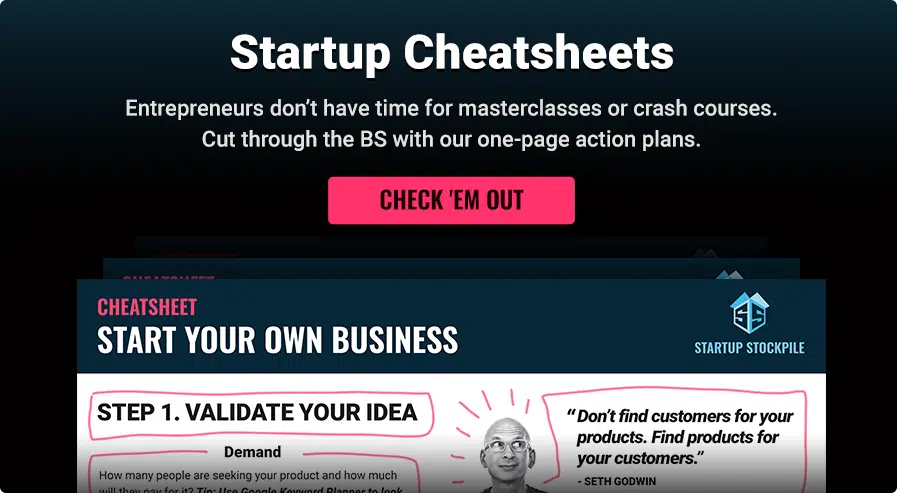If you are dreaming about launching a startup that will be worth at least $1 billion right from the start, I have to disappoint you. While business validation is never straightforward, you can estimate the value of your company by its stage.
For example, a company that has an exciting business idea is worth up to $500,000. Once you develop a final product, start growing a customer base, and build strategic partnerships, the estimated value of your startup will be somewhere between $2 million and $5 million.
In this article, we will unveil the five crucial steps that will protect your startup from failing.
1. Build A Solid Team
Research studies show that 23% of startups fail due to the lack of the right team. When hiring your first employees, it is always a good idea to start small. For starters, make a list of job specifications. Determine which positions are critical to your company’s growth and fill them first. Hire from the top and expand your team strategically and gradually.
Consider outsourcing certain business operations, such as bookkeeping, accounting, legal advisors, web development, digital marketing, etc. Outsourcing helps you save money and grow your startup organically.
While your first employees’ knowledge is crucial to your startup’s growth, it is not the only factor to consider. The idea is to choose the right people that reflect your company’s values and contribute to the company’s culture and promotion.
2. Focus On People-Oriented Leadership
At the startup phase of a company, charismatic and innovation-oriented leaders are crucial. For starters, be confident and spread positivity. Enthusiasm is contagious. It helps you grow a highly motivated team that is eager to give their best to see the company grow.
To engage your team, you first need to understand them. Let your staff know that you welcome any insights, ideas, criticism, and viewpoints. Schedule regular meetings with employees and show appreciation and empathy. Spend time understanding their problems, dreams, and goals, both personal and professional. That way, you will identify their strengths and weaknesses and assign them with the right roles.
Finally, provide your employees with advancement opportunities. For cash-strapped startups, these rewards do not have to be money-related. For example, say you need a cybersecurity professional. Instead of hiring a new person for that position, have a member of your IT team get a cybersecurity certification such as a Certificate IV in Information Technology Networking.
Investing in your employees is not only good for them it benefits the whole company.
3. Be Flexible
Startups are based on innovative ideas. Unfortunately, they do not always work. The study mentioned above found that 42% of startups fail because there is no market need for their products. In that case, your team needs to be flexible and change the organization’s focus. There is no shame in pivoting from your initial ideas to succeed.
Many popular brands went through the rebranding process. One such example is Airbnb. It started with three creative guys renting mattresses on their apartment’s floor to pay for their rent. Over time, their concept evolved into an $18 billion vacation rental online marketplace.
On the other hand, many big companies refused to change and, ultimately, failed. For instance, Kodak developed the world’s first consumer digital camera. However, they did not roll it out because the management was worried about its effects on the film market. They missed the digital revolution and filed for bankruptcy in 2012.
4. Address Customers’ Unresolved Problems
Why should customers choose your brand over its more authoritative competitors? The only way to gain a competitive advantage in the sea of similar businesses is to offer something unique that addresses customers’ unresolved problems and pain points.
Start by analyzing your competitors.
Visit their websites.
Purchase their products.
Sign up for their newsletter list.
What are the benefits of their products? What do people love about them? Learn from their success stories and replicate the tactics that work.
Focus on the gaps in your target market that your rivals have not addressed. Is there any room for innovation and improvement? Once you find a painful problem no one else has solved until now, you will grab customers’ attention and encourage them to purchase your products faster.
Apart from competitive analysis, there are many alternative product validation techniques to apply, such as:
- Asking for customer opinions and feedback on industry forums and Q&A platforms
- Talking about the product idea with your employees, partners, friends, and family
- Conducting online surveys before you start building a product
- Starting a crowdfunding campaign
5. Create Product Prototypes and Get Customer Feedback
It is unlikely you will get an impeccable, finished product right from the start. During the product development process, you need to create product prototypes to use as a sample. The goal is to create multiple product versions, test their effectiveness in the market, and start eliminating those that do not resonate with your audiences.
One of the most common mistakes entrepreneurs make is not collecting feedback on prototypes. There are multiple reasons for that. For example, you may be afraid that someone will steal your product or that you will disappoint customers. To overcome your fears, consider developing an inexpensive prototype and inform your audiences about its purpose.
Only by collecting customer feedback and insights will you be able to tweak your ideas and create a final product that drives sales.
Ready to Grow Your Startup?
Starting up is always hard. However, if you have a solid plan and a clear vision, you can prevent your business from failing.
Focus on building a solid company culture and grow the innovation mindset.
Analyze your target market and build a product that solves the unsolvable.
Test the effectiveness of your product prototypes and collect customer feedback.
Finally, if customers are not passionate about your product, remember that there is no shame in refocusing.
Editor’s Note: This article is part of the blog series Start Your Business brought to you by the marketing team at UniTel Voice, the virtual phone system priced and designed for startups and small business owners.






